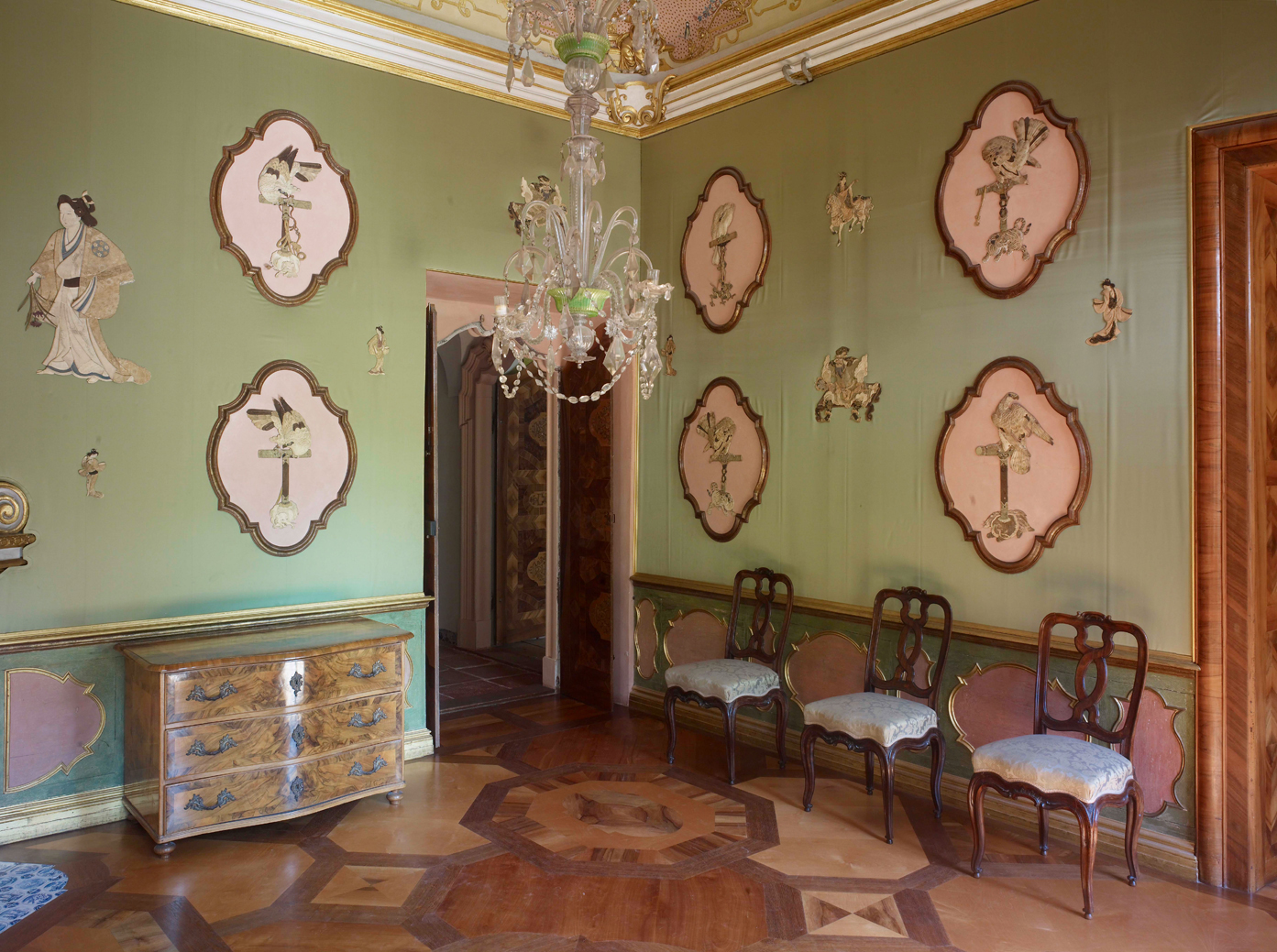Puppets for the Margravine
Japanese Ephemera and Their (Re)Construction in Eighteenth-Century Chinoiserie
Identifier (Artikel)
Abstract
This article introduces a group of 23 textile appliqués, or oshi-e – scraps of padded and painted fabric applied to a support of papier mâché – that were manufactured in Japan during the final decades of the seventeenth century. The pieces were soon transferred to Europe and collected by Sibylla Augusta Margravine of Baden (1675–1733). One of Germany’s early advocates of the stylistic idiom of chinoiserie, by 1723 Sibylla had integrated the pieces into the decoration of her newly erected mansion Favorite near Rastatt.
This article has two foci. First, it contextualizes the genre of textile appliqués within its Japanese culture of origin where such items served as ephemeral festival decoration, fashionable accessories, and tools of sophisticated pastime in the milieu of urban merchants. Secondly, the article explores practical and theoretical aspects of intercultural transfer and discusses the fundamental re-reading of transferred artifacts against the background of chinoiserie in central Europe.
The appliqués at Schloss Favorite are significant in several respects. They count among the oldest surviving examples of this genre worldwide. They become even more valuable from the fact that their maker, Fujiya Saburōbei, can be unambiguously identified from existent documentation as a leading manufacturer of oshi-e and purveyor to the Dutch East India Company. While there is no conclusive evidence, there is a strong possibility that the appliqués at Schloss Favorite came to Europe as private merchandise of the famous traveler and author, Engelbert Kaempfer (1651–1716). Lastly, the pieces constitute exceedingly rare material evidence for the role of textiles and other ephemera in both early modern Japan and Europe as well as related practices of collecting and display.
Statistiken


Lizenz

Dieses Werk steht unter der Lizenz Creative Commons Namensnennung - Nicht-kommerziell - Keine Bearbeitungen 4.0 International.


